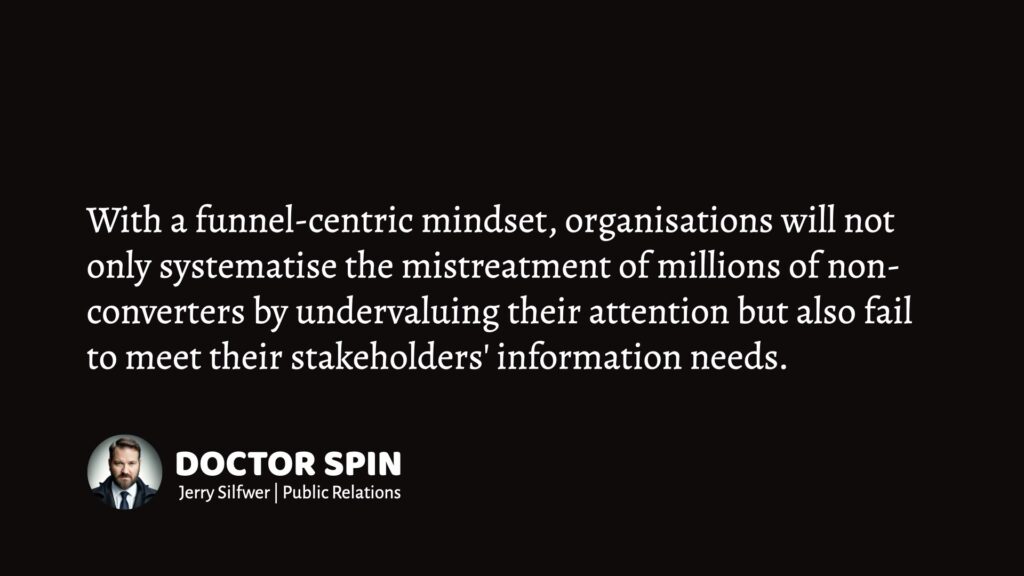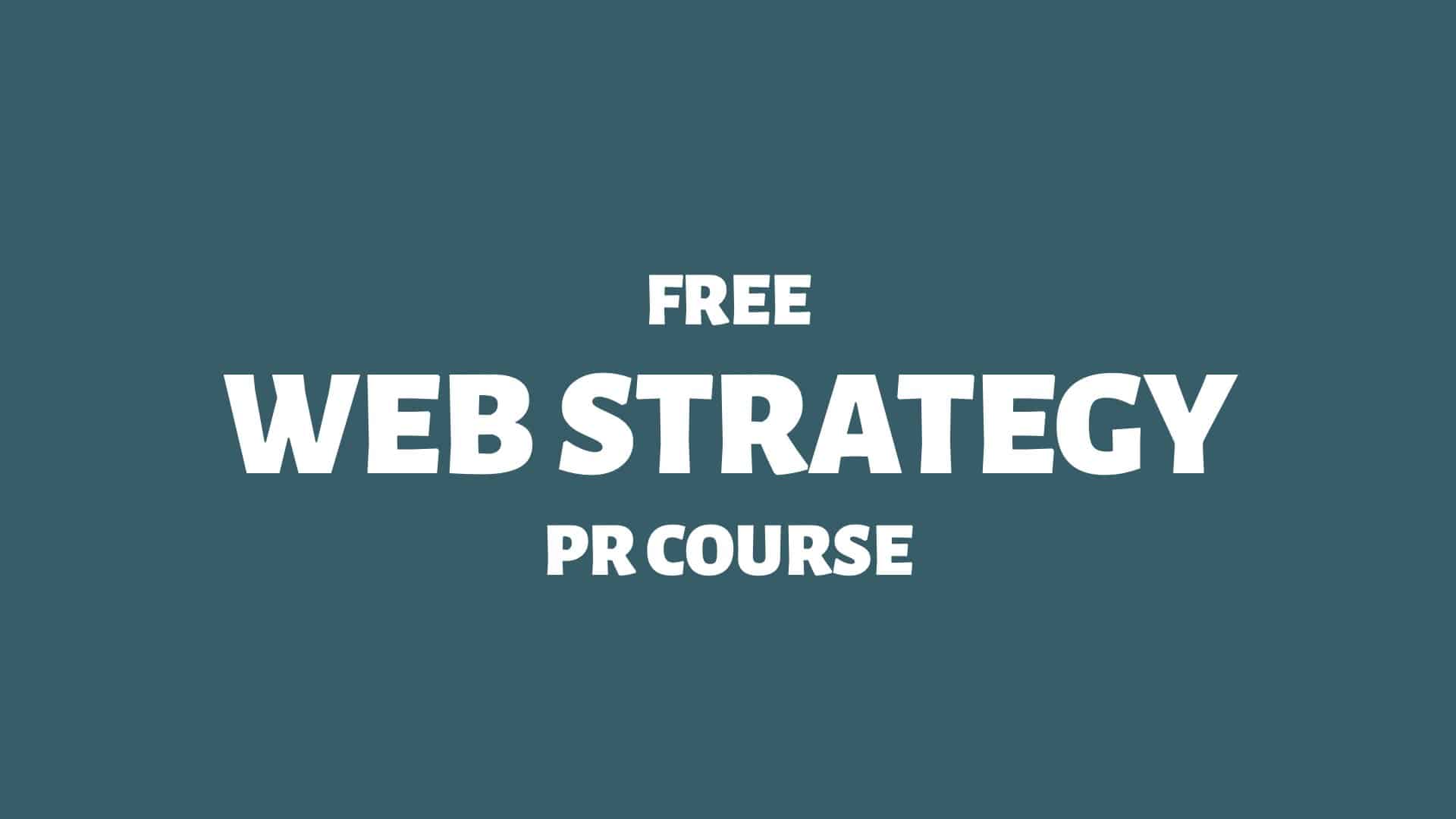Beware the leaky funnel problem.
Most organisations are blind to the leaky funnel problem. Counting conversion rates backwards makes attention undervalued and falsely correlated to sales.
With a funnel-centric mindset, organisations will not only systematise the mistreatment of millions of non-converters by undervaluing their attention but also fail to meet their stakeholders’ information needs.
Here we go:
The Leaky Funnel Problem
By definition, businesses have a bottom line:
Money.
The most widespread approach to solving the PESO paradox of allocating resources between different types of media channels is to trace each marketing- and public relations activity to a final transaction.
This is done via a funnel.
“Digital funnels of sales, combining search optimization and web analytics, are key components in digital marketing, promoting website advancement and increasing sales volume.“
Source: Research of the marketing instruments of adoption of management decisions in the field of planning and business development 1Zinchenko, A., & Kolosova, V. (2019). Research of the marketing instruments of adoption of management decisions in the field of planning and business development. Vestnik Universiteta. … Continue reading
Suppose your funnel aims to attract social media awareness to produce inbound traffic to your website. There, you convert visitors into email subscribers who are primed to convert into transactional customers over time. In that case, it’s possible to calculate the monetary value of a single social media click based on the average order value — or customer lifetime value.
When counting conversion rates backwards, organisations often find that one transaction at the bottom of the funnel requires one million social media impressions at the top.
The Cost of Wasting Attention
Simply put: Funnels leak.
Converting one user out of a thousand impressions is something. Letting 999 users down is—everything.
In the eyes of funnel-centric organisations, the value of an individual’s attention gets diminished to a fraction of a marketing dollar — when attention is arguably an invaluable resource.

This approach is a “100% pure marketing mindset” — and extremely problematic.
In the eyes of funnel fundamentalists, we are demographic entities stripped of our essence, mere puppets of consumption with wallets in place of hearts.
So, how must we think about funnels?
Learn more: The Leaky Funnel Problem
Funnels: Related Reading

THANKS FOR READING.
Need PR help? Hire me here.

What should you study next?
Spin Academy | Online PR Courses

Spin’s PR School: Free Web Strategy PR Course
Get started with this free Web Strategy PR Course and learn essential public relations strategies and concepts for online PR success.
Iceberg Publishing
Conversion Design
Website Psychology
Learn more: All Free PR Courses
💡 Subscribe and get a free ebook on how to get better PR.

Annotations
| 1 | Zinchenko, A., & Kolosova, V. (2019). Research of the marketing instruments of adoption of management decisions in the field of planning and business development. Vestnik Universiteta. https://doi.org/10.26425/1816 – 4277-2019 – 2‑24 – 27 |
|---|


